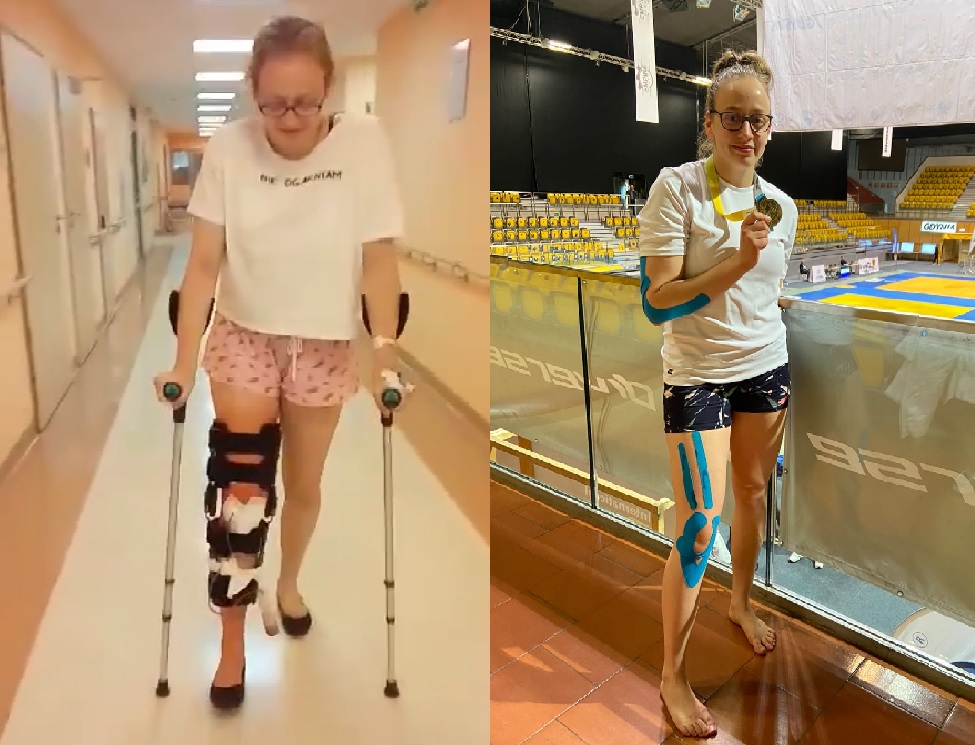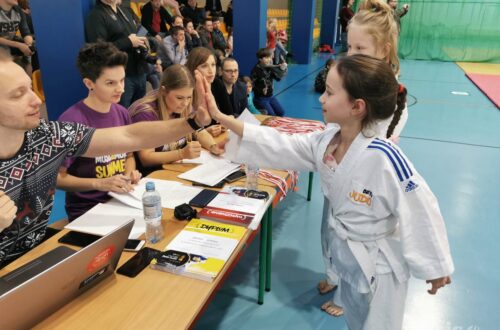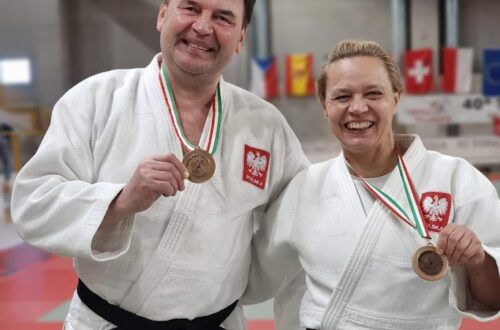
Fizjoterapia? Nie dla idiotów!|Physiotherapy? Not for idiots!
Słyszeliście kiedyś slogan „sport to zdrowie”?
Ludzkie ciało stworzone jest do niesamowitych wyczynów. Przekonuję się o tym codziennie. Prawidłowo użytkowane pozwoli cieszyć się pełną sprawnością. Nieprawidłowe zaś może sprawić, że nagle zrozumiecie słowa „przez sport do kalectwa”.
Jak rozumiem zwrot „nieprawidłowe użytkowanie”?
Niewłaściwe wykonywanie ćwiczeń, ignorowanie sygnałów, które wysyła Twój organizm (jednym z nich jest ból), zły sposób odżywiania, pomijanie regeneracji (sen, odnowa biologiczna, fizjoterapia) oraz ciągły stres.
Zacznijmy jednak od małej dawki informacji!
To fakt, że ciało ludzkie potrzebuje ruchu, by prawidłowo funkcjonować, jednak uprawianie sportu może prowadzić do kontuzji.
Narażeni są szczególnie intensywnie trenujący profesjonaliści. Niewielki uraz wymaga przeważnie kilku dni odpoczynku oraz regeneracji sił, bywają niestety również cięższe przypadki, wymagające pomocy fizjoterapeuty.
Niektórzy jednak uważają, że fizjoterapia to strata czasu, bo przecież: „kiedyś przestanie boleć”.
Błąd.
Ciało sportowca jest poddawane często ogromnym obciążeniom, które sumują się z każdym kolejnym dniem treningowym, tygodniem, miesiącem. To sprawia, że układ mięśniowy i szkieletowy ulega ciągłemu procesowi uszkadzania.
I trzeba go naprawić.
Jest na to kilka sposobów. Wśród metod regeneracji układu ruchu możemy wymienić:
- masaż
- terapia manualna
- rolowanie
- rozciąganie
- środki odnowy biologicznej
Problem w tym, że często sportowcy nie mają na to czasu, ochoty, lub uważają, że to nieistotne. Zdarza się nawet, że opinię tę podsycają trenerzy (shame on you!). Zaś jeśli proces uszkodzeń komórkowych i stanów zapalnych pójdzie o krok za daleko, to dochodzi wówczas do zmian w mechanice pracujących mięśni, a w konsekwencji do powstania kontuzji. Często niezwykle bolesnych i nierzadko przekreślających szanse na dalszy rozwój i osiągnięcia sportowe.
Do brzegu!
Fizjoterapia osoby, która zajmuje się sportem zawodowo, różni się od klasycznej tempem pracy oraz znaczną intensywnością. Przeważnie jest to spowodowane koniecznością udziału w zbliżających się turniejach czy zawodach.
Praca nad powrotem do sprawności musi się rozpocząć jak najszybciej po wystąpieniu urazu.
Zanim rozpocznie się terapia, stan sportowca poddawany jest ocenie funkcjonalnej tak, by jak najszybciej odnieść sukces. Badany jest jego układ mięśniowy, kostny, limfatyczny, powięziowy. Zebrane informacje posłużą ułożeniu planu treningowego, który będzie dostosowany do specyfiki uprawianej dyscypliny sportu.
Sam proces rehabilitacji sportowca składa się z odpowiednio dobranych ćwiczeń, które trenują równowagę, gibkość, poprawiają zdolności motoryczne oraz usprawniają pracę układu krążeniowo-oddechowego i wydolność.
Liczy się czas.
Praca nad powrotem do sprawności musi się rozpocząć jak najszybciej po wystąpieniu urazu. Piszę to w tym artykule już drugi raz, i nie bez powodu. Jeśli chcemy szybko wrócić do formy, to musimy szybko zacząć działać. Najlepsi sportowcy rozpoczynają w dniu wystąpienia urazu, a nie jutro czy za tydzień. A chcemy być najlepsi, prawda?
Podsumuję zdaniem, które krąży w internecie na stronach poświęconych motywacji, a które mój trener bardzo lubi powtarzać: „dbajmy o swoje ciało, to jedyne miejsce do życia, które mamy„.
______________________________________
Have you ever heard the slogan „sport is health„?
The human body is designed for amazing feats. I find out about it every day. Properly used, it will allow you to enjoy full efficiency. Incorrect and wrong can make you suddenly understand the words „from sport to disability„.
How do I understand the phrase „incorrect use”?
Incorrect exercise, ignoring your body’s signals (one of which is pain), poor nutrition, skipping recovery (sleep, wellness, physical therapy), and constant stress.
But let’s start with a small dose of information!
It’s a fact that the human body needs movement to function properly, but sports can lead to injuries.
Professionals training particularly intensively are at risk. A minor injury usually requires a few days of rest and regeneration of strength, unfortunately there are also more severe cases, requiring the help of a physiotherapist.
Some, however, believe that physical therapy is a waste of time, because: „someday it will stop hurting”.
Mistake.
The athlete’s body is often subjected to enormous loads that add up with each subsequent training day, week or month. This causes the muscular and skeletal systems to be continuously damaged.
And it needs to be fixed.
There are several ways to do this. Among the methods of regeneration of the locomotor system, we can mention:
- massage
- manual therapy
- rolling
- stretching
- wellness products
The problem is that athletes often do not have the time, or the inclination to do it, or consider it irrelevant. It even happens that this opinion is fueled by coaches (shame on you!). And if the process of cellular damage and inflammation goes a step too far, the mechanics of working muscles changes, and consequently injuries arise. Often extremely painful and often destroying the chances of further development and sports achievements.
To the shore!
Physiotherapy for a person who is professionally involved in sports differs from the classic in terms of the pace of work and considerable intensity. Usually it is caused by the necessity to participate in upcoming tournaments or competitions.
Work on recovery must start as soon as possible after the injury occurs.
Before starting therapy, the athlete’s condition is functionally assessed in order to be successful as soon as possible. Its muscular, skeletal, lymphatic and fascial systems are examined. The collected information will be used to create a training plan that will be adapted to the specifics of the sports discipline practiced.
The process of athlete rehabilitation itself consists of properly selected exercises that train balance, flexibility, improve motor skills and improve the work of the circulatory and respiratory system and endurance.
Time is of the essence.
Work on recovery must start as soon as possible after the injury occurs. This is the second time I am writing this in this article, and for good reason. If we want to get back into shape quickly, we need to act quickly. Top athletes start on the day the injury occurs, not tomorrow or a week from now. And we want to be the best, right?
I will summarize the sentence that circulates on the internet on the websites devoted to motivation, and which my trainer likes to repeat very much: „let’s take care of our body, this is the only place we have to live„.





